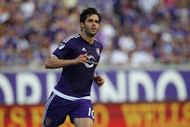Major League Soccer has designs on becoming one of the top leagues in the world. Its own executives have consistently said that the goal is to be considered as such by 2022, which as 2018 begins, now leaves them just four years to achieve that ambitious target.
The league certainly has some things going for it and with further selling points emerging, it has a chance of becoming an attractive product for the worldwide market, even if not a top league in terms of outright quality, by the time 2022 rolls around.
Here are five reasons we’ll be watching MLS in four years.
#1 The Atmosphere

Attendance figures for MLS matches have been on a steady upward curve in recent years, and the average attendance reached a new high of 22,113 in 2017.
That average was higher than those in France’s Ligue 1 and the Dutch Eredivisie in their respective 2016-17 campaigns and only marginally behind the average achieved in Italy’s Serie A. In total, only six leagues had greater average attendances than MLS.
In addition to sheer numbers, the establishment of various grassroots supporters groups intent on creating a similar atmosphere to those seen in European and South American stadiums has improved the spectacle inside MLS stadiums. Some of their appropriation of ultra chants and attitude may come across as cringe-worthy, but the noise they generate certainly adds to the product.
One of the selling points of the English Premier League is the full stadiums and consistently good atmosphere. MLS looks to be on its way towards replicating that, which will offer a further incentive for those considering following the league.
#2 For The Derbies and Rivalries

Regardless of whether or not they are week-to-week followers of the league in question, there are certain derbies and rivalries that attract any football fan. The likes of Fenerbache vs. Galatasaray, Boca Juniors vs. River Plate or Rangers vs. Celtic. These matches are a spectacle regardless of what happens on the pitch. Their history and folklore make them watchable.
MLS is only just over 30 years old and only Colombus Crew, Colorado Rapids, DC United, Los Angeles Galaxy and New England Revolution remain in the same form in which they entered the inaugural season back in 1996. There hasn’t been an awful lot of time for storied rivalries to develop.
With that said, the return of a second team to Los Angeles for 2018, in the form of Los Angeles FC, means that the league now has local derbies in each of its two primary markets. Putting marketing clout behind Los Angeles FC vs. Los Angeles Galaxy and New York City FC vs. New York Red Bulls could, with a few years of work, create attractive events out of those fixtures.
Football is built on such rivalries. In a neighborhood, a town or city showing itself superior to its neighbor out on the pitch. Feeding into that tribal element and promoting it's few genuine local derbies would be certain to get more eyes on MLS.
#3 For The Young South American Talent

Atlanta United seem to have set a bit of a trend after performing so well in their debut season in MLS last year on the back of the acquisition of some exciting South American talents.
Miguel Almiron made the MLS All-Star squad after an impressive campaign in which he notched nine goals and 14 assists, while Hector Villalba also contributed, as did loanee Yamil Asad. Atlanta has followed the same approach ahead of the 2018 season, signing the extremely promising Ezequiel Barco from Independiente, alongside his fellow Argentinian Franco Escobar and Venezuelan Under-20 full-back Jose Hernandez.
Others have followed suit. New franchise Los Angeles FC have made 19-year-old Uruguayan forward Diego Rossi a Designated Player, while other young players from Argentina, Paraguay, Uruguay, and Venezuela have joined other MLS sides for the new campaign.
It will need a couple of these players to go and make a name for themselves in Europe for it to become to reality, but it does seem as if MLS is positioning itself as a bridge between South America and Europe. If that is achieved, it will be a league well worthy of close interest.
#4 For Good, Prime Talent

MLS officials are keen to make the league a viable destination for good quality players in their mid-to-late twenties. While, to date, many of those who have been attracted have been Mexicans or Americans seeking a return to their home continent after solid spells in Europe, Toronto’s signing of Sebastian Giovinco from Juventus in 2015 suggested more is possible.
Giovinco was just a week or so shy of his 28th birthday, an Italian international and although he was struggling for game time at Juventus, had offers on the table from other European clubs. He was a marquee signing for both Toronto and MLS.
The plan is now to attract other players of his caliber. The United States offers a certain cultural and lifestyle pull, particularly in its bigger cities such as Los Angeles or New York, and if wages can more or less match what is on offer at middling European teams, it isn’t out of the question that other players could be tempted to make the move.
If MLS and its clubs can pull off one or two such signings each year between now and 2022, it would make their product far more watchable for a global audience.
#5 For The Last Glimpse of Great Players

MLS is clearly keen to distance itself from its long-held image as a retirement home for aging stars from Europe and the Americas. But it is something that can become positive if the general quality of the league can be increased in the coming years.
For a long time, there was such a difference between the ability of the aging stars from elsewhere and the average level of players in the league that it was difficult to get invested. The excitement of watching the final matches of a great of the game was diminished by the general lack of quality around him: both on his team and the opposition.
But as the league improves and more “name” players begin to join towards the end of the twenties, rather than at the end of their thirties, it will provide a more competitive and attractive context in which to watch great players bow out of the game.
